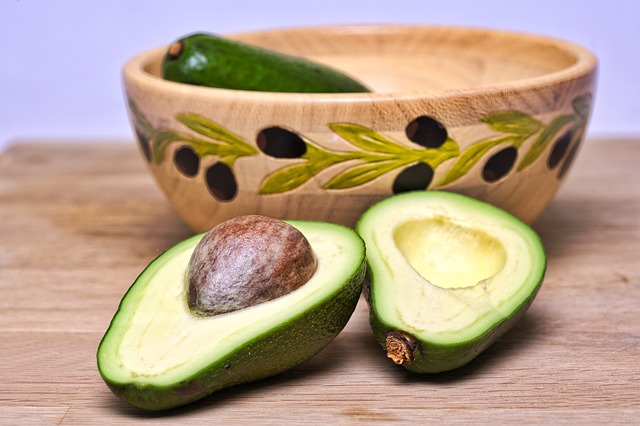Eating healthy has become more and more important to many. We know some oils are healthy, and some are not. But, which types of oil are which? This question can be confusing, as, over the past few years, many oils have shown up on the shelves of the supermarkets.
Though we may think of them as unhealthy, dietary fats are essential to boost your energy levels and to support cell growth. Your body cannot make these essential fatty acids and must get them from food. With this in mind, the U.S. Dietary Guidelines recommend that Americans include small amounts of healthy fat in their diet.
The Skinny on Fats in Oils
Notably, all types of oil contain three kinds of fatty acids
- Monounsaturated fatty acids
- Polyunsaturated fatty acids
- Saturated Fats
The unsaturated fats have a beneficial effect on your health. Although, you should still eat them in moderation. Saturated fats and trans fats, termed the “bad fats,” can negatively affect your health.
The monounsaturated fats help to reduce bad cholesterol levels in your blood. Moreover, they can lower your risk of heart disease and stroke. These fats are rich in nutrients that will significantly boost your cellular health. The types of oil that are rich in monounsaturated fats also contribute vitamin E to your diet.
Types of Oil: Grains, Fruits, and Nuts – Oh, My!
Oil from seeds and grains add variety to your dishes. Canola oil, corn oil, grapeseed oil, safflower oil and sunflower oil are some best examples.
There are also nut oils and fruit oils. Almond oil, Hazelnut oil, peanut oil and pecan oil are some of the nut oils. Avocado and olive oils get sourced from fruits.
In a like manner, tropical oils such as coconut, Dende and palm oils add a tropical flavor to your culinary preparation. Although oils have artery-clogging fats, surprisingly some good fats present in them boost your heart health.
The Top 10 Tastiest, Healthiest Oils
Here is a rundown of ten types of oil that are the healthiest and are pleasing to your taste buds.
1. Olive oil

This golden, often somewhat green, oil is made by pressing whole olives. Olive oils have a significantly high percentage of monounsaturated fats compared to the different types of oil. This oil is also a rich source of antioxidants known as polyphenols which substantially boosts your heart health.
Extra virgin olive oil (EVOO) gets sourced from the first pressing of the olives. In addition to having more flavor and a fruity aroma, it is also less processed and is considered unrefined. The extra-virgin olive oil contains the most antioxidants and is typically more expensive than the other types of oils. You cannot use EVOO for high temperatures in cooking, whereas you can use refined olive oil for high-temperature cooking.
2. Peanut oil
Among the different types of oil, peanut oil has the highest percentage of monounsaturated fats, about forty-nine percent. This oil is pale in color with a nutty scent and an intense flavor. You can use peanut oil for high heat cooking since its smoking point is 450 degrees.
This oil is a rich source of vitamin E. Additionally it may reduce your heart disease risk and improve your insulin sensitivity. Peanut oil is eighteen percent saturated fat, however, that isn’t enough to be considered a concern for heart health. This nut oil is an excellent choice for cooking stir fries and Asian-inspired dishes.
3. Palm oil

The fleshy fruits of oil palms are the source of palm oil. Many confuse palm oil with palm kernel oil which is pressed from the seeds of the fruit. This vegetable oil is semisolid at room temperature. Nowadays it’s being used as a transfat substitute in commercial baking.
Palm oil is a significant source of tocotrienols. They are a category of vitamin E that supports brain health. Studies show that palm oil reduces bad cholesterol and increases good cholesterol. Additionally, it has a smoking point of just under 450 degrees which makes it an excellent frying oil.
4. Corn oil
The germ of corn is the source of corn oil. This seed oil is rich in flavonoids and lutein which helps to maintain healthy skin, vision, and mucous membrane.
You can use refined corn oil for frying because it has a high smoking of about point 450 degrees. It has a neutral flavor and mostly finds its use in commercial kitchens.
5. Coconut oil

This tropical oil comes from the fruit of the coconut palm tree. Coconut oil is a soft white and solid at room temperature. Hence, it’s not ideal for vinaigrettes or as a finishing oil. On the positive side, it increases the good HDL cholesterol, boosts brain function, increase fat burning and helps you to lose abdominal fat.
The fatty acids present in coconut oil are medium chained. So when you eat these fats, they go straight to your liver which utilizes them as a quick source of energy.
This oil is excellent for moderate heat roasting. When heated it melts and gives off a tropical scent. The smoking point of coconut oil is 350 degrees. It’s butter-like consistency when cold makes it suitable for non-dairy baked goods.
6. Canola oil
Extracted from the rapeseed plant, canola oil is high in unsaturated fats such as plant-based omega three fatty acids. Additionally, it is low in saturated fats.
A 2013 review published in Journal Nutrition Reviews says canola oil helps to reduce total cholesterol and LDL cholesterol levels. Thus it ultimately reduces your risk of heart disease.
You can use canola oil for salad dressings. But, remember to store it in a cool dark place away from the oven and stove.
7. Avocado oil

High in monounsaturated fats, avocado oil is known as one of nature’s healthiest oils. It typically has a smoking point of 520-degree Celsius which makes it an efficient pantry item. You can use avocado oil for roasting, sautéing, searing and vinaigrettes alike.
Avocado oil is rich in oleic acid and is also an excellent source of vitamin E. Moreover, it keeps your heart healthy, improves digestion and aids in weight loss. You don’t need to refrigerate avocado oil after opening it. Store your avocado oil in a cool, dark cupboard.
8. Grapeseed oil
This light green oil gets extracted from the grape seeds as a by product of the winemaking process. Chefs, in particular, flavor Grapeseed oil for its high smoking point and its neutral flavor. It works well for vinaigrettes and stir-fries. Full of antioxidants, grapeseed oil helps lower your overall blood cholesterol levels, blood pressure, and heart rate.
9. Sunflower seed oil

This oil is light in color and has a neutral flavor. Moreover, it contains one of the highest concentrations of polyunsaturated fats among the different types of oil. Sunflower seed oil boosts your immune system, improves heart health, boots energy and reduces inflammation.
This non-volatile, all-purpose oil has a smoking point of 440-450 degrees. So, sunflower oil can withstand high cooking temperatures. Sunflower oil can be your pantry hero for all things searing to saute related. However, since sunflower oil comes from seeds, it may quickly turn rancid. So store it in a cool place and use it within a year.
10. Sesame oil
A favorite in Indian, Asian and Middle Eastern cooking, sesame oil is a mix of monounsaturated fat and polyunsaturated fat. This oil is used mostly for its intense flavoring.
Sesame oil is a general all-purpose oil which you can use for roasts, sautés and more. The smoking point is 410 degrees. The toasted sesame oil gives a nutty flavor to any dish. It has a darker color and an intense flavor. Sesame oil protects your heart health, improves bone quality and oral health, boosts metabolism and blood circulation, and reduces inflammation.
Take care to refrigerate sesame oil after opening it.
Go Buy Yourself Some Healthy Oil
A panel of experts from the American Heart Association says that Americans must reduce the use of saturated fats. These fats are present in poultry, meat, cheese, dairy products and tropical oils such as palm and coconut oils. Avoiding saturated fats lowers your risk of heart disease.
It would be wise to replace saturated fats with unsaturated fats which include monounsaturated fats and polyunsaturated fats. With this in mind try to use the types of oil which contains these good fats in your cooking.
What is your favorite cooking oil? Let us know down in the comments!
Featured Image: CC0 by Stevepb via Pixabay
Last update on 2025-04-01 at 13:34 / Affiliate links / Images from Amazon Product Advertising API








Pingback: 18 Tools of the Trade—Essential Baking Equipment | All Cake Prices